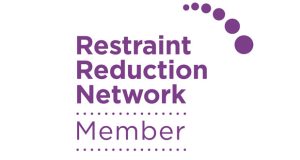University campus buildings and student accommodation facilities are complex infrastructures. With so many security requirements, it can be difficult for facility managers to keep on top of them all and the challenges they impose. Andrew Shaw, Architectural Consultant for Allegion UK, discusses how to ensure the security and safety of students
Many UK universities treat safety and security as a feature hard-wired into their systems, as young adults and their parents are citing safety when it comes to important factors when choosing a university. Safety and Security are listed in prospectuses and on university websites to ensure that current and prospective students, staff and parents alike have a clear idea of the safety and security procedures in place.
What’s more, both student accommodation and campus facilities can pose many security challenges, and with the high turnover of students, keeping track of access is important. This not only allows the responsible persons to keep everything running smoothly and safely, it also helps to eliminate the possibility of certain crimes.
Facility managers and security teams must consider high-traffic areas, access for all, student turnover, fire safety measures, security of people and belongings, as well as efficient and smooth people movement.
A NEW CHAPTER
For any parent, sending their child off to university can be a daunting chapter to embark on. For the student, it bodes well for them to know they’re journeying off to a safe place where they’ll be looked after and secure.
There are a number of ways to relieve these concerns, such as comparing different university’s Annual Security Reports (ASR) or checking the institution’s website for a safety and security page.
After-all, it’s important for universities to present clear, well thought-out safety and security protocols. Institutions which do so could ultimately be more attractive to prospective students and their parents than ones which are lacking.
For facility managers, then, what are some sure ways to keep on track of such protocols and ensure the maintenance of highly safe and secure premises?
EFFICIENCY AND COHERENCY
Every October, university facility managers must ensure that everything – from individual student data records to premises refurbishment and site safety – is in place to welcome new and returning students, staff and visitors.
In student accommodation, for instance, students may be living there for approximately eight months of the academic year. They’ll then vacate the premises, which are readied for the next intake of students.
Student accommodation has also been previously criticised for poor design, especially when it comes to fire safety and general security. With that in mind, it’s important to give the appropriate thought to which doors and door hardware are suitable to specific requirements, to maximise security and, in-turn, student safety and wellbeing.
In campus facilities, too, the buildings must cater to the ebb and flow of those entering and exiting premises. Therefore, doors and door hardware must facilitate access and egress, particularly in high-traffic areas.
TRADITIONAL AND ELECTRONIC
When it comes to university accommodation, without a key handover strategy in place, how can universities be sure their students have adequate access?
For example, some access control systems allow tracking of who accesses and exits a premise. They also easily issue and retract credentials, allowing someone access as easily as it can be taken away.
Conversely, traditional mechanical locks can be beneficial both as a stand-alone solution and as a combination with electronic access control.
Ultimately, all design aspects of a particular building must be considered before arriving at a product choice. The variety of choice available means universities can opt for hardware that suits their needs, even when faced with budgeting pressures.
ADEQUATE LOCKDOWNS
The Complete University Guide states that an estimated one-third of the UK’s student body becomes a victim of crime (mainly theft and burglary). When you also consider the vast number of new students moving away from home to university, it’s easy to understand how their lack of knowledge about a certain area may make them susceptible to victimisation.
One focus for optimising security in university facilities and accommodation is to put in place an effective lockdown strategy.
Every university campus has both exterior and interior sections, so implementing an adequate lockdown plan must include both of these layers.
On top of this, it can be easy to make the mistake of carrying out dangerous or ineffective methods without recognising them as so.
For example, using tape, magnets or other barricades on a door could not only invite security risks but is also a breach of fire safety regulations.
FIRE SAFETY PROTOCOLS
A sufficient evacuation plan as well as high-quality doors and door hardware can help to keep students and staff safe.
In the event of a fire, students and staff must be clear on what is expected of them to ensure a smooth and effective evacuation.
Doors and door hardware that facilitate maximum egress can help to improve evacuation and prevent unnecessary stagnation of movement.
Specifically, hold-open devices are linked up to the fire alarm so that in the event of a fire, the doors release immediately and then return to a closed position.
Similarly, exit devices (such as panic bars or emergency exit devices) open without keys and are easily accessible, to allow a functional exit if needed.
THE BASELINE
When it comes to university security, there isn’t a one-size-fits-all solution. The age of the buildings, credential platform and protocols, budget and long-term security strategy must be considered.
A lack of product knowledge, older buildings and too much choice can all lead to a reluctance to upgrade old systems or even the wrong selection of products. With effective lockdowns and locking systems being of high importance, it’s important to recognise the industry fallacies and steer clear from the risks posed by “value engineering”.
Wherever you are on the continuum, there are solutions fit for your specific requirements.




